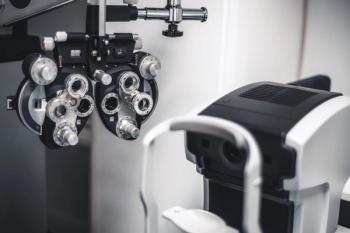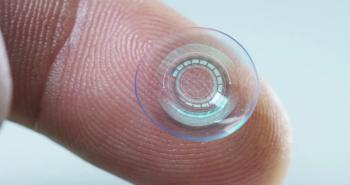
How sleep affects the ocular surface
At every age we need adequate, uninterrupted sleep for optimal, wakeful functioning. Insufficient sleep is associated with a number of chronic diseases and conditions such as diabetes, cardiovascular disease, obesity, and depression.
At every age we need adequate, uninterrupted sleep for optimal, wakeful functioning. Insufficient sleep is associated with a number of chronic diseases and conditions such as diabetes, cardiovascular disease, obesity, and depression.1 Traditional medicine also considers appropriate sleep, among other factors, essential to maintain ocular health.2
Sleep and ocular health
A 2016 study from Japan concluded sleep quality is associated with dry eye disease (DED), and sleep disturbance seems to be an influencing factor on DED, especially dry eye symptoms.3
Previously from Dr. Mastrota:
We are familiar with ocular surface disease (OSD) in patients with sleep apnea, often associated with floppy eyelid syndrome.4 In a longitudinal examination of risk factors for severe dry eye symptoms in U.S. veterans, sleep apnea was identified as a risk factor for severe dry eye symptoms.5 Additionally, sleep posture may be a factor in OSD.
Alevi et al reports that in addition to current dry eye treatments, patients who sleep on their sides or face down may see a reduction in dry eye and meibomian gland dysfunction (MGD) if they change their sleep pattern to the supine position.6
It is interesting to note that sleep disturbance is a common nonmotor phenomenon in Parkinson's disease as well as dry eye syndrome.7, 8
Related:
Identifying sleep disturbance
In addition, sleep disturbance can be identified and quantified using the
(http://www.psychiatry.pitt.edu/sites/default/files/page-images/PSQI_Instrument.pdf). The PSQI is a
The PSQI measures the quality and patterns of sleep in older adults by measuring seven domains. It consists of 19 individual items generating seven component scores:
• Subjective sleep quality
• Sleep latency (i.e., how long it takes to fall asleep)
• Sleep duration
• Habitual sleep efficiency (i.e., the percentage of time in bed that one is asleep)
• Sleep disturbances
• Use of sleeping medication
• Daytime dysfunction
This validated questionnaire differentiates “poor” from “good” sleep.
Furthermore, patients may suffer from a number of
• Dyssomnias (such as insomnia, hypersomnia, and sleep apnea)
• Parasomnias (disorders characterized by abnormal or unusual behavior of the nervous system during sleep such as sleepwalking and REM behavior disorder)
• Sleep
• Circadian rhythm sleep disorders
A 2009 Centers for Disease Control (CDC) survey disclosed that adults who reported sleeping less than the recommended seven to nine hours per night were more likely to have difficulty performing many daily tasks.10
Related:
Combating sleep disorders
The CDC recognizes insufficient/poor sleep as a public health problem, especially since the CDC surveillance of sleep-related behaviors has increased in recent years.
Additionally, the National Academy of Medicine encouraged collaboration between the CDC and the National Center on Sleep Disorders Research to support development and expansion of surveillance of the U.S. population’s sleep patterns and associated outcomes.11 The National Sleep Foundation offers suggestions to enhance patients’ sleep patterns-including the promotion of regular, healthy sleep habits.12
This begs the question: Should ODs incorporate a sleep survey into their dry eye exams?
Akin to dry eye disease, there are numerous validated global and targeted patient sleep/sleepiness/insomnia questionnaires available. Questionnaires can be selected to help identify sleep disorders in subsets of patients such as pediatric, adolescent, adult patients, or obstructive sleep apnea suspects.
With novel technologies and emerging discovery, our evaluation of the OSD patient has become more sophisticated and fine-tuned. Each snippet of information supplements the profile of individual dry eye patients and adds a target for therapeutic intervention.
One prescription we should possibly include is lid and sleep hygiene. Patient sleep survey results may add the extra clinical sign/symptom that may be the tipping point for our OSD patients.
Related:
References:
1. Centers for Disease Control and Prevention. Sleep and Sleep Disorders. Available at: https://www.cdc.gov/sleep/index.html. Accessed 6/6/17.
2. Haji-Ali-Nili N, Khoshzaban F, Karimi M. Lifestyle Determinants on Prevention and Improvement of Dry Eye Disease from the Perspective of Iranian Traditional Medicine. Iran J Med Sci. 2016 May;41(3):S39.
3. Kawashima M, Uchino M, Yokoi N, Uchino Y, Dogru M, Komuro A, Sonomura Y, Kato H, Kinoshita S, Tsubota K. The association of sleep quality with dry eye disease: the Osaka study. Clin Ophthalmol. 2016 Jun 1;10:1015-21.
4. Mastrota KM. Impact of floppy eyelid syndrome in ocular surface and dry eye disease. Optom Vis Sci. 2008 Sep;85(9):814-6.
5. Ong ES, Alghamdi YA, Levitt RC, McClellan AL, Lewis G, Sarantopoulos CD, Felix ER, Galor A. Longitudinal Examination of Frequency of and Risk Factors for Severe Dry Eye Symptoms in US Veterans. JAMA Ophthalmol. 2016 Dec 22. doi: 10.1001/jamaophthalmol.2016.4925. [Epub ahead of print]
6. Alevi D, Perry HD, Wedel A, Rosenberg E, Alevi L, Donnenfeld ED. Effect of Sleep Position on the Ocular Surface. Cornea. 2017 May;36(5):567-571.
7. Martinez-Ramirez D, De Jesus S, Walz R, Cervantes-Arriaga A, Peng-Chen Z, Okun MS, Alatriste-Booth V, RodrÃguez-Violante M. A Polysomnographic Study of Parkinson’s Disease Sleep Architecture. Parkinsons Dis. 2015;2015:570375.
8. Nowacka B, Lubinski W, Honczarenko K, Potemkowski A, Safranow K. Ophthalmological features of Parkinson disease. Med Sci Monit. 2014 Nov 11;20:2243-9.
9. Buysse DJ, Reynolds C, Monk TH, Berman SR, Kupfer DJ. The Pittsburgh Sleep Quality Index: A new instrument for psychiatric practice and research. Psychiatry Res. 1989 May;28(2):193–213.
10. Centers for Disease Control and Prevention. MMWR. 2011 March 4;60(8):234-266. Available at: http://www.cdc.gov/mmwr/PDF/wk/mm6008.pdf. Accessed 6/6/17.
11. Centers for Disease Control and Prevention. Insufficient Sleep is a Public Health Problem. Available at: http://www.cdc.gov/features/dssleep/. Accessed 6/6/2017.
12. National Sleep Foundation. Healthy Sleep Tips. Available at: https://sleepfoundation.org/excessivesleepiness/sleep-tools-tips/healthy-sleep-tips. Accessed 6/6/2017.
Newsletter
Want more insights like this? Subscribe to Optometry Times and get clinical pearls and practice tips delivered straight to your inbox.















































